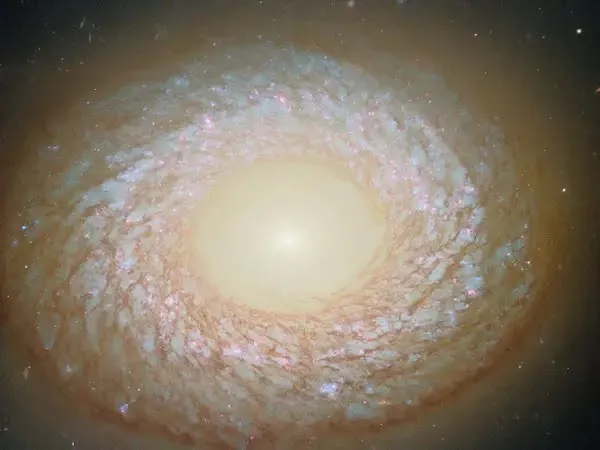In a remarkable astronomical revelation, NASA’s Hubble Space Telescope has captured an enigmatic galaxy located approximately 67 million light-years from Earth that challenges traditional classifications. Unlike the familiar spiral or elliptical structures commonly observed, this peculiar galaxy exhibits an irregular, almost chaotic form that perplexes scientists. Its unusual morphology, marked by uneven light distribution and unpredictable stellar patterns, suggests a complex evolutionary history possibly shaped by galactic mergers or gravitational disruptions. The discovery underscores the vast unknowns of cosmic formation, compelling astronomers to reconsider long-standing theories about how galaxies evolve, interact, and sustain their intricate architectures across the universe.
A Celestial Discovery That Challenges Convention
The Hubble Space Telescope, known for its groundbreaking contributions to cosmic exploration, has unveiled yet another cosmic mystery. The newly observed galaxy, situated around 67 million light-years away, stands apart from traditional galactic classifications. It is neither spiral, with its elegant swirling arms, nor elliptical, with its smooth, luminous symmetry. Instead, the structure appears fragmented, its stars and dust scattered in unpredictable arrangements that defy established models.
Astronomers are fascinated by this discovery because it presents a galaxy type that does not fit neatly into the established Hubble Sequence—a system used for over a century to categorize galaxies by their shapes and properties.
A Puzzle in Galactic Morphology
Preliminary analyses suggest that this strange formation could be the result of past collisions or gravitational interactions with neighboring galaxies. Such encounters often distort the original shape of galaxies, stretching and twisting them into unfamiliar forms. However, what makes this galaxy exceptional is its apparent stability despite its irregular structure.
Astronomers are now examining whether this galaxy is a transitional form — possibly a remnant of two merging galaxies — or an entirely new morphological category. Its unbalanced luminosity and off-center core suggest a turbulent history that continues to evolve.
Implications for Cosmic Evolution
The discovery has reignited scientific debates about the processes that drive galactic formation and transformation. Traditionally, galaxies are understood to form from the gravitational collapse of gas and dust clouds, evolving over billions of years into spiral or elliptical shapes. Yet, anomalies like this recently discovered galaxy indicate that these processes might not follow a single, predictable path.
Researchers believe that studying such irregular galaxies could provide key insights into the universe’s formative epochs—particularly those marked by intense collisions and energetic starbursts that shaped the cosmos into its current structure.
Technology and Precision Behind the Discovery
The image was captured using Hubble’s Advanced Camera for Surveys (ACS), renowned for its ability to observe faint cosmic objects across vast distances. The telescope’s high-resolution imaging allows astronomers to study the galaxy’s individual components — star clusters, gas filaments, and dark matter halos — with unprecedented clarity.
This level of precision is critical for identifying subtle variations in light and density that might explain the galaxy’s strange geometry. Researchers are also comparing the data with that from newer telescopes, such as the James Webb Space Telescope (JWST), to build a more complete understanding of the object’s origins.
Redefining the Boundaries of Cosmic Knowledge
The observation of a galaxy that defies conventional classification underscores a broader truth about the universe: despite decades of exploration, humanity has only begun to scratch the surface of cosmic complexity. Each new discovery adds nuance to the grand narrative of the cosmos, reminding scientists that our understanding remains fluid and incomplete.
As astrophysicists continue to probe this peculiar galaxy, their findings could potentially reshape the frameworks used to categorize celestial bodies. Whether a cosmic anomaly or a new archetype of galactic evolution, this mysterious structure stands as a testament to the universe’s boundless creativity and the ever-evolving pursuit of human curiosity.

Comments